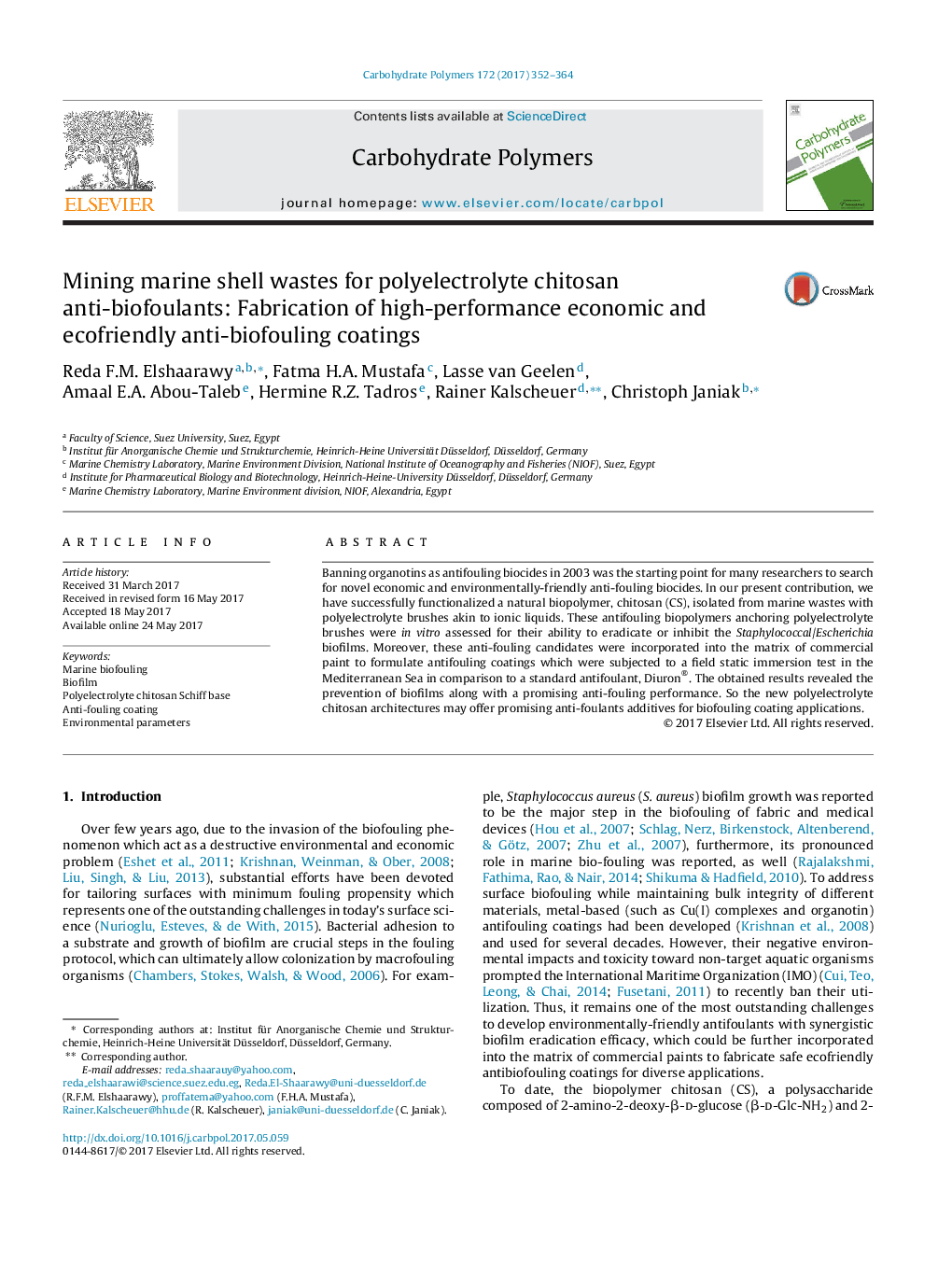| Article ID | Journal | Published Year | Pages | File Type |
|---|---|---|---|---|
| 5156716 | Carbohydrate Polymers | 2017 | 13 Pages |
Abstract
Banning organotins as antifouling biocides in 2003 was the starting point for many researchers to search for novel economic and environmentally-friendly anti-fouling biocides. In our present contribution, we have successfully functionalized a natural biopolymer, chitosan (CS), isolated from marine wastes with polyelectrolyte brushes akin to ionic liquids. These antifouling biopolymers anchoring polyelectrolyte brushes were in vitro assessed for their ability to eradicate or inhibit the Staphylococcal/Escherichia biofilms. Moreover, these anti-fouling candidates were incorporated into the matrix of commercial paint to formulate antifouling coatings which were subjected to a field static immersion test in the Mediterranean Sea in comparison to a standard antifoulant, Diuron®. The obtained results revealed the prevention of biofilms along with a promising anti-fouling performance. So the new polyelectrolyte chitosan architectures may offer promising anti-foulants additives for biofouling coating applications.
Related Topics
Physical Sciences and Engineering
Chemistry
Organic Chemistry
Authors
Reda F.M. Elshaarawy, Fatma H.A. Mustafa, Lasse van Geelen, Amaal E.A. Abou-Taleb, Hermine R.Z. Tadros, Rainer Kalscheuer, Christoph Janiak,
